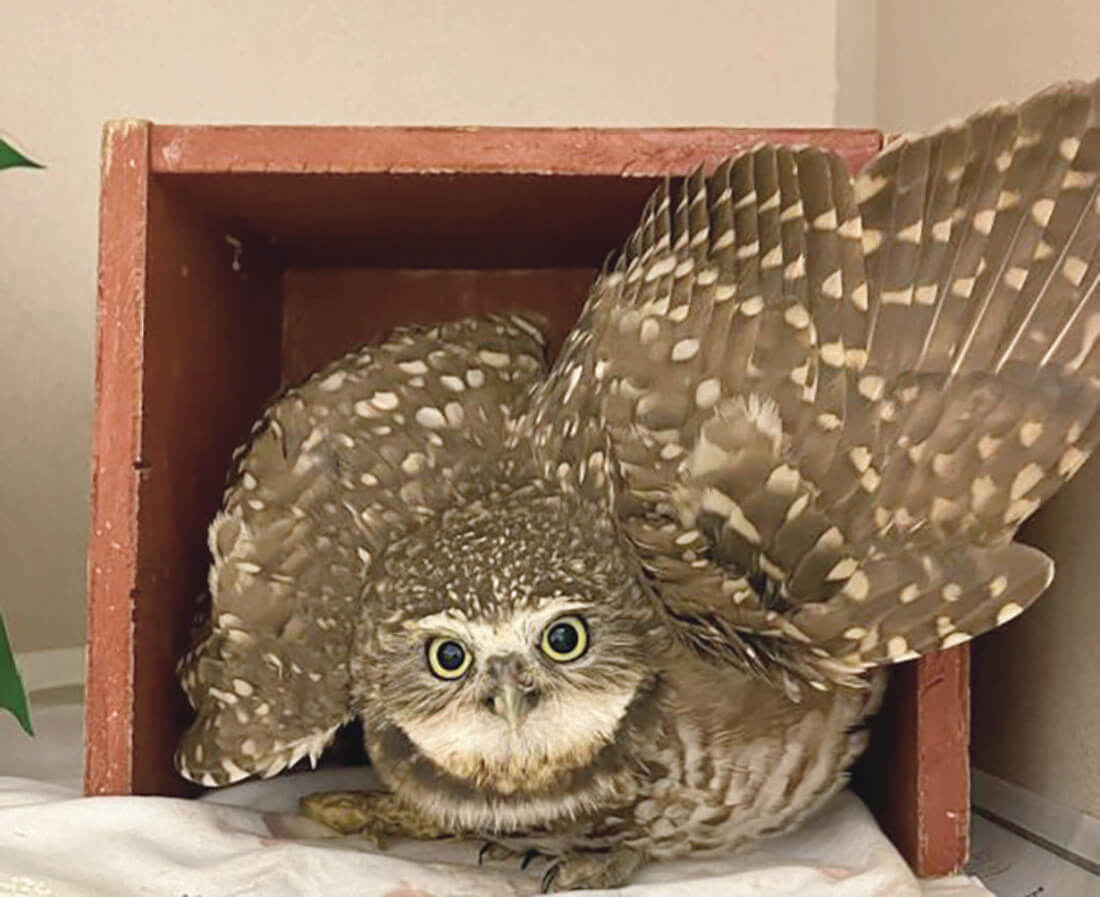Burrowing Owls
Most unusually, we currently have two Burrowing Owls in care. They are now migrating to Southern California for the winter and these two came in just a week apart from one another.
The first was brought to us by one of our volunteer transporters from the West Los Angeles animal shelter. Likely a victim of blunt force trauma, this Burrowing Owl arrived with decreased range of motion in one wing, unable to stand and with one foot knuckling and probably a problem with his coracoid (a bone in the bird’s chest that stabilizes the shoulder).
We put this Owl on cage rest, started pain medication and antibiotics. We created a wrapping similar to a shoe to enable his foot to bear weight properly and to fix any deformity. Our veterinarian Dr. Purdin also wrapped his wing to stabilize the movement and allow any damage to heal.
After a few days of rest and care, this Owl’s wings were symmetrical and he was using both feet properly. We test flew him yesterday and he still needs a few more weeks with us as he was not able to gain altitude.
The second Burrowing Owl was again brought to us from one of our volunteer transporters but this time from the West Valley animal shelter and was found in Van Nuys. Slightly smaller than the other bird, this Owl’s diagnosis was more mysterious as there was no initial visible reason why she was brought in for care and refused to fly. She has been with us for six days and is eating well on her own, but doesn’t display normal reactiveness. We test flew her yesterday as well and she did wonderfully. She is on track to be released in the next few days.
Often cage rest without the need to hunt for food can do wonders for animals.
When there’s something wrong and you go to the doctor, they will ask what’s wrong and how it occurred. The challenge of working with wild animals is that we often don’t know how the injury occurred and have to use tests, experience and deduction to determine how to treat the problem. The animal can’t tell us where it hurts and hiding pain is key for a wild animals’ survival.
Burrowing Owls are long-legged creatures smaller than a crow. Their name comes from their knack for digging burrows or using the burrows of other animals such as Prairie dogs, Ground squirrels, or Desert Tortoises for nesting. Unlike many owls, the Burrowing Owl is most active during the day and hunts small animals and insects. Due to their widespread distribution, the International Union for the Conservation of Nature (IUCN) classifies the Burrowing Owl as a species of least concern however they are endangered in parts of Canada and a species of special protection in Mexico. In California the Burrowing Owl is a species of special concern.
Decreasing habitat has diminished the number of Burrowing Owls. Additionally, the efforts to eradicate Prairie Dogs and Ground Squirrels in some areas have been a success and since the Owls like to use these burrows, preferred nesting areas are lost. Additionally, the widespread use of pesticides has been linked to Burrowing Owl population diminishment.
To volunteer or donate to the California Wildlife Center: https://cawildlife.org/.
Photo courtesy of CWC
Two burrowing owls were rescued and brought to the California Wildlife Center (CWC) for treatment and released after a few days of rest and care.








